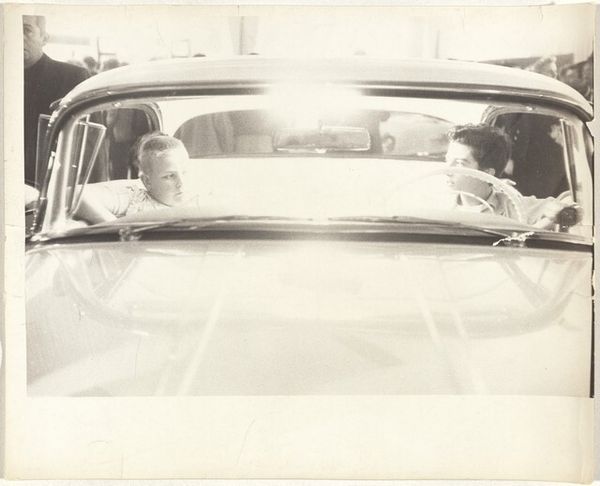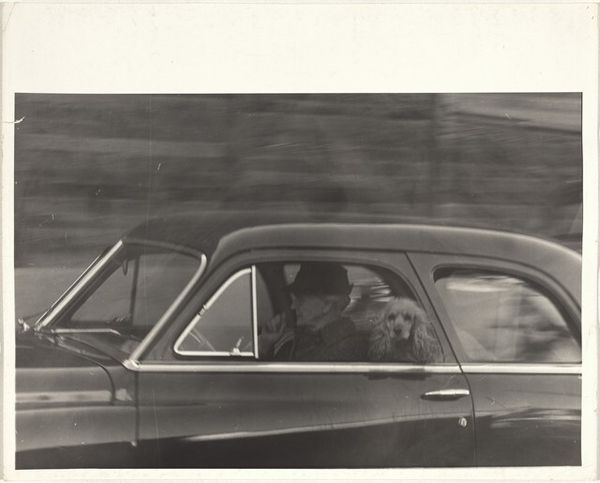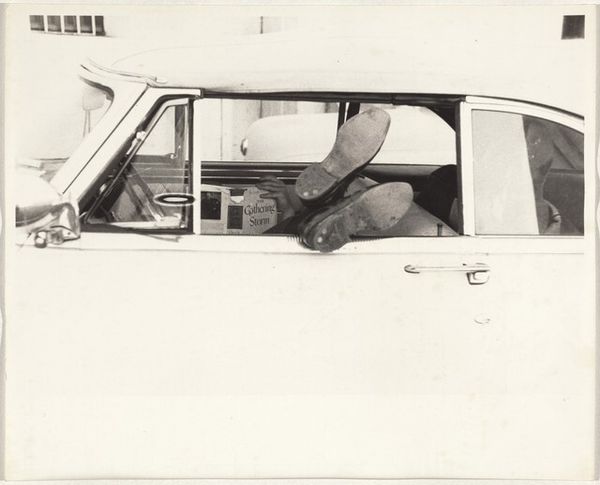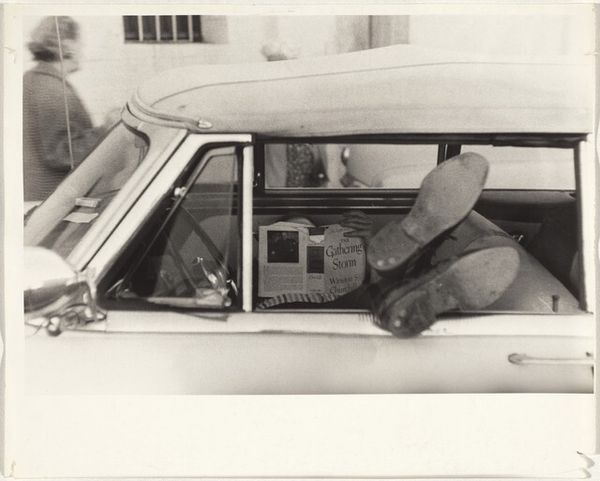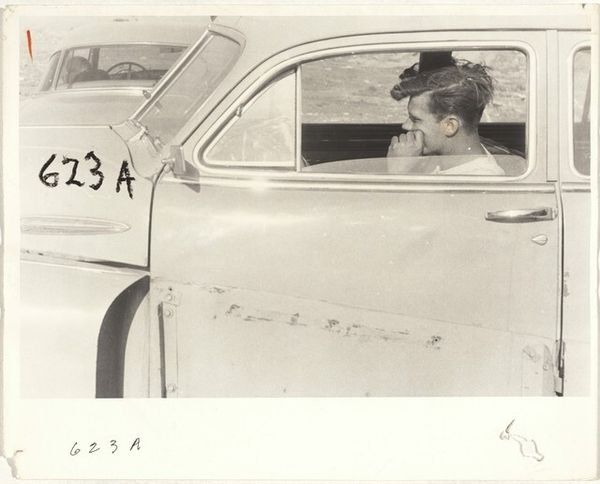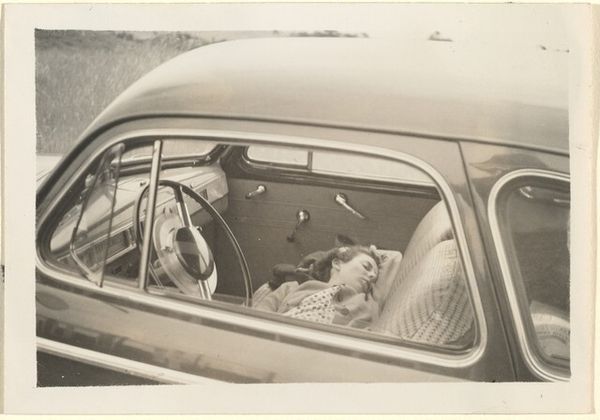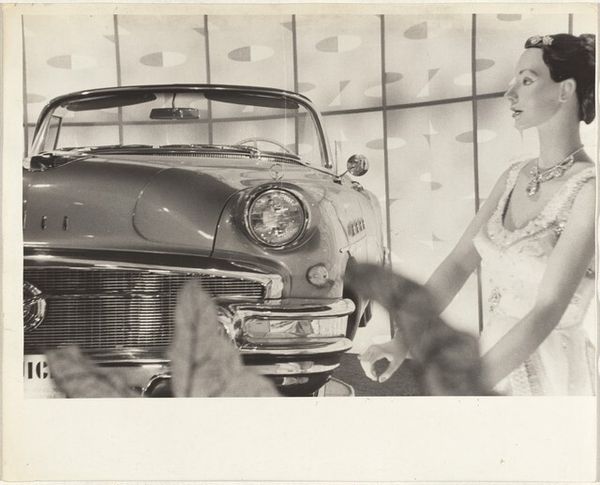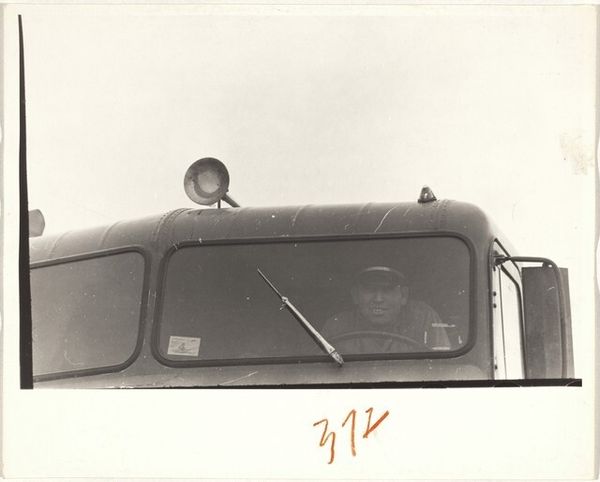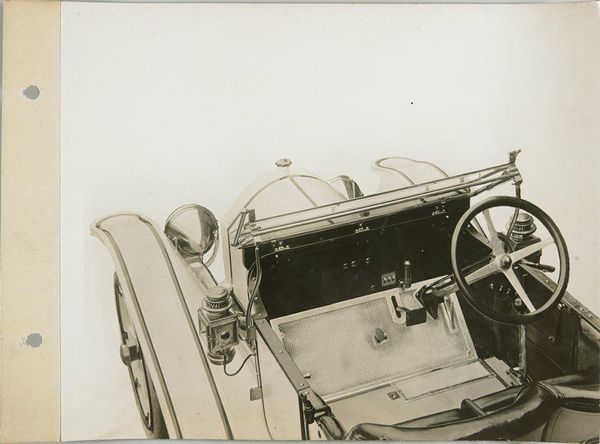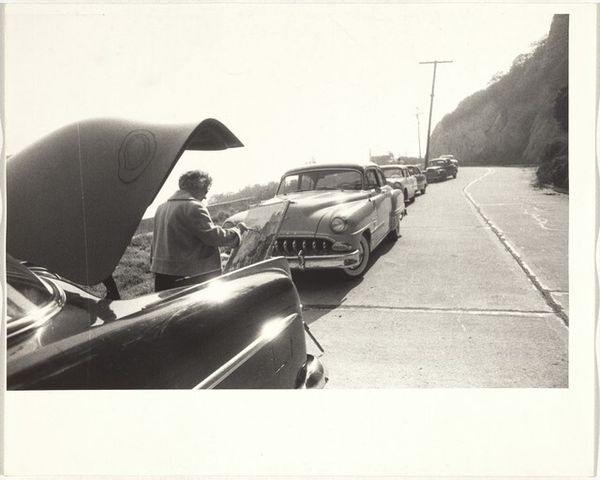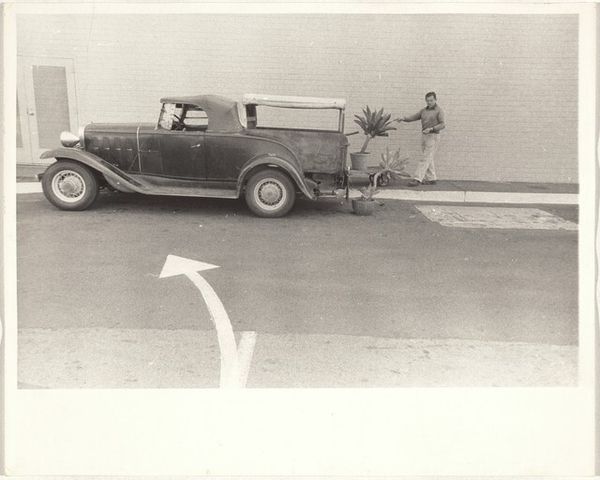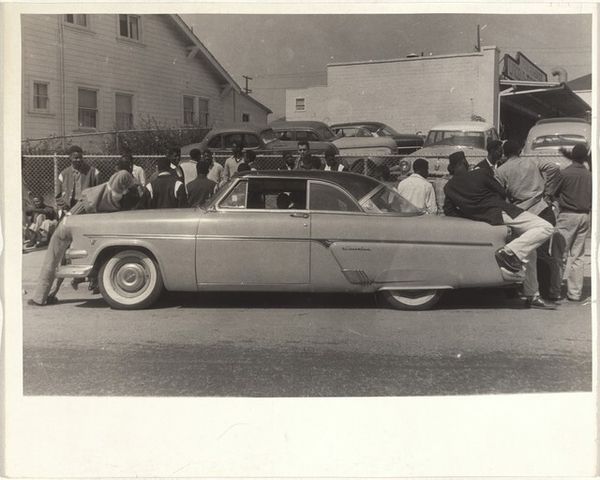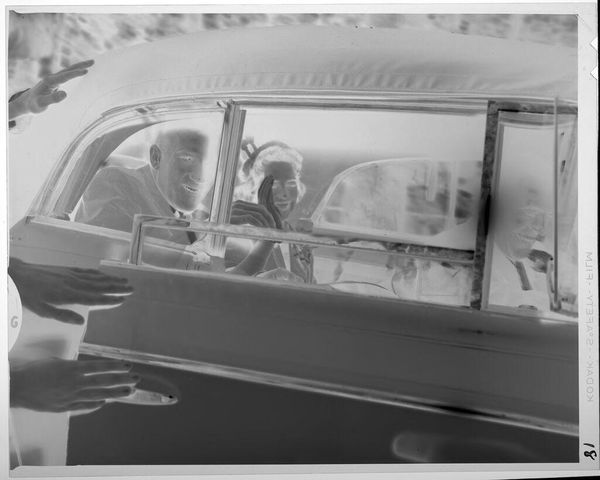
print, photography, gelatin-silver-print
# print
#
pencil sketch
#
landscape
#
street-photography
#
photography
#
gelatin-silver-print
#
pop-art
#
modernism
Dimensions: sheet: 20.4 x 25.2 cm (8 1/16 x 9 15/16 in.)
Copyright: National Gallery of Art: CC0 1.0
Editor: So, this gelatin silver print is Robert Frank's "Driving Range, Ventura Boulevard—Los Angeles" from 1956. It’s… kind of hazy and disjointed, with those massive cars looming in the foreground. What strikes you when you look at it? Curator: Immediately, I’m thinking about postwar American identity, particularly the burgeoning car culture in relationship to societal inequalities. The image hints at a kind of bleached-out, alienated landscape. Notice how the figures in the background are small and almost ghostly behind this very prominent display of automotive metal and might? Editor: Bleached-out, that's a good way to put it. It almost feels like a critique of the American Dream. Do you think the lack of clarity is intentional? Curator: Absolutely. Frank, as an outsider, offers a critical lens on America. Consider the role of mobility and freedom associated with cars in the 1950s. Who had access to this kind of “freedom”, and at what cost to communities and the environment? This snapshot aesthetic disrupts any sense of idealized American life, challenging us to look beyond the glossy image. Editor: So you see the cars almost as symbols of… exclusion? Curator: Precisely! And think about Ventura Boulevard as this very specific location in Los Angeles. It is like a crossroads, representing a fractured promise of the "California dream." It suggests that even within this symbol of opportunity, underlying social tensions simmer. Editor: Wow, I didn’t consider it that deeply. Now the composition and the haziness really emphasize that sense of unease. I was so focused on the cars themselves, I wasn't thinking about who they represent, and what they cost. Curator: That's the power of art, isn't it? It prompts us to question what's presented, and to think about the broader societal narratives it engages. Looking through this photograph has made me question my own notions about freedom and access.
Comments
No comments
Be the first to comment and join the conversation on the ultimate creative platform.
